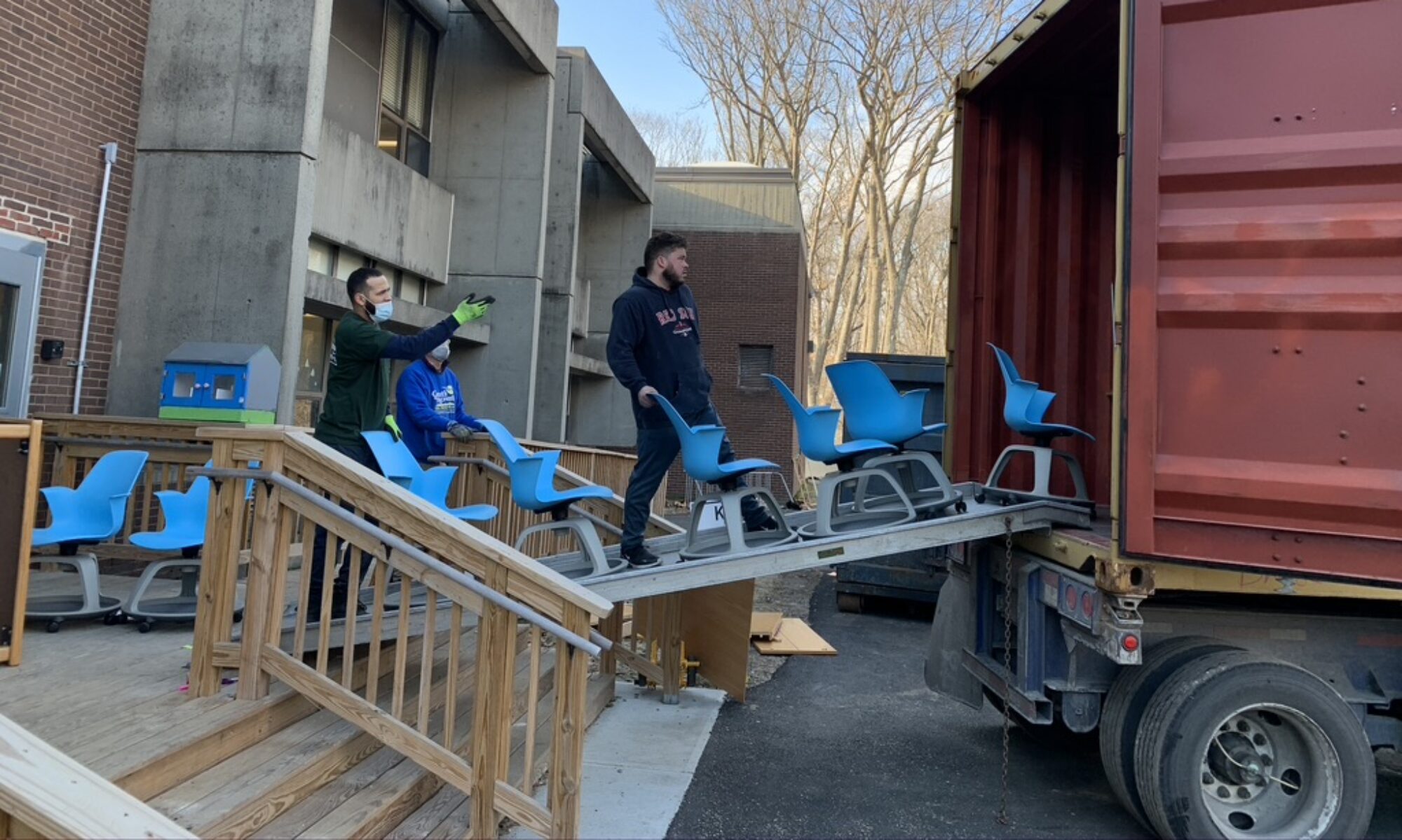After decades of hard use, MIT is undertaking a complete renovation of its Sloan Building, hub of the Sloan School of Management, on Memorial Drive in Cambridge. After removing all furnishings suitable for reuse on campus, MIT was left with nearly 850 pieces of surplus, including office and school furnishings, desks, seating, file cabinets, shelving, work tables, and more.
MIT has a strong commitment to Sustainability, so they looked for an alternative to throwing these items in the dumpster. MIT has worked with IRN on reuse and recycling initiatives for more than a decade; they were one of our very first members. So it was natural they called IRN for help.
Finding a home for the surplus wasn’t an issue. The issue was schedule. When MIT called, just a week remained before the start of renovation, and that week included Labor Day. And there were logistics issues: no loading dock; a single, slow elevator; long carries; and the City of Cambridge, which imposes severe restrictions on trucking. And there was enough surplus to fill five tractor-trailers; it wasn’t a small project.
With just a couple of days to work with, we didn’t have time to arrange trucking straight from MIT to a nonprofit recipient. Or more accurately, we didn’t have time to be sure there wouldn’t be hangups. The demo contractor was in the wings, on his own tight schedule. Hangups were something we couldn’t afford.
The solution, worked out with our partner Olympia Moving & Storage, was to set up a shuttle to IRN’s warehouse in Somerville, about two miles away. One crew at MIT loaded Olympia box trucks as fast as they could; another crew attended the trucks in Somerville, where they unloaded as fast as they could. The long distance tractor trailers were instructed to arrive in Somerville, where the Somerville crew packed them high and tight for shipment to charitable recipients.
With a hammer deadline to empty the building by the close-of-business on Friday, MIT gave verbal approval for the project on Wednesday, September 4. On Thursday, IRN and Olympia mobilized a 14-man crew and four 26-foot box trucks. That day, we shuttled ten truckloads from the Sloan Building to our warehouse. On Friday, the crew loaded and shuttled another seven trucks. At 1:00 PM on Friday we did a final walk-through with MIT, buttoned up, and turned the building over for renovation. By Tuesday of the following week, the tractor-trailers had arrived, been loaded, and departed Somerville, on their way to needy communities.
The ultimate recipients were identified through longtime IRN charitable partner Food For The Poor. Of the five trailers filled with MIT’s surplus, one trailer was sent to an FFP sister organization in Ghana, in West Africa, two trailers were sent to community development projects in Nicaragua, and two were sent to FFP’s warehouse in Jamaica, for distribution to relief projects there, in Haiti, and elsewhere in the Caribbean.
Great thanks go to MIT for their commitment to reuse and making this project happen; to Olympia for rescheduling other projects to make this one possible; and to Food For The Poor for so quickly identifying and setting up transportation to recipients. Cooperation is a great thing, and cooperation for a good cause is the best.
Click here for a downloadable case study of this project in PDF .
